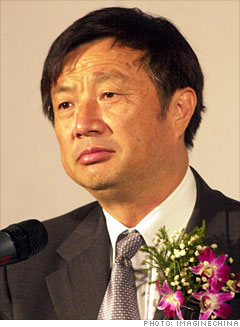Search News

Although 2011 was a turbulent year, with Huawei's net profits decreasing by 53% compared to the previous year, the Chinese telecom giant still managed to maintain sustained revenue growth in its telecommunication networks, terminals products, and related businesses. Huawei also had the industry's highest global smartphone shipments.
A significant portion of the credit for Huawei's growth goes to its founder and president, Ren Zhengfei. And the company recently announced plans to up its R&D spending by almost 20% (to $4.5 billion) as part of a broader move beyond the Chinese market and its bread-and-butter telecom business.
But as the company makes a play for overseas expansion, the founder's Chinese military background (he served as a technologist in the People's Liberation Army) has raised some concern in the U.S. It makes sense, then, that the company has made a move to regularly shake up its management structure. Last year, Huawei implemented a novel rotating CEO system last year (Eric Xu is serving as its current CEO.), where three different executives take turns at the helm every six months.
Editor's note: A previous version of this slide incorrectly described Huawei's CEO rotation program. This has been corrected.
The dean of the Guanghua School of Management, Hongbin Cai, thinks China's B-schools can churn out entrepreneurs - by emulating the U.S.